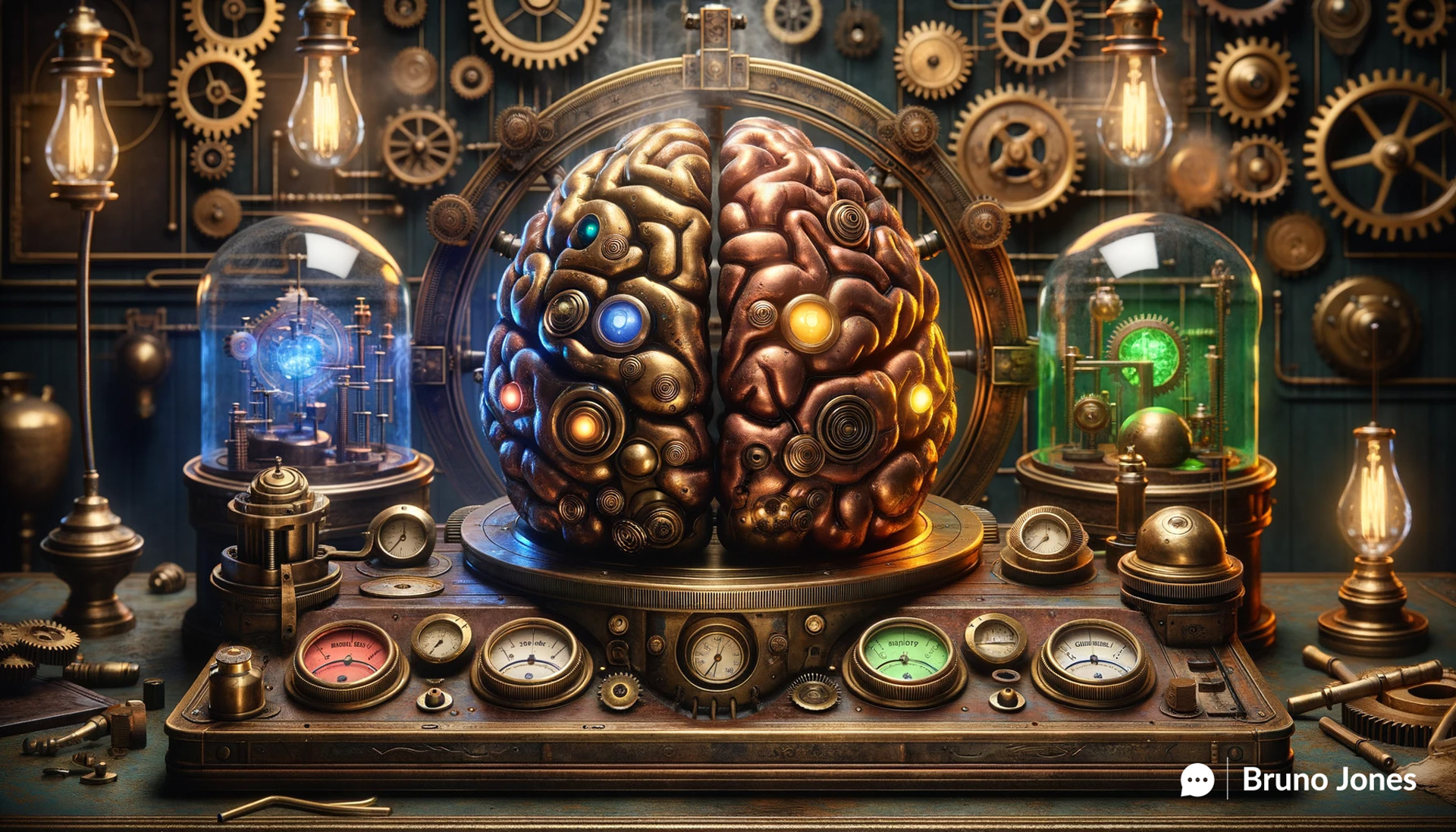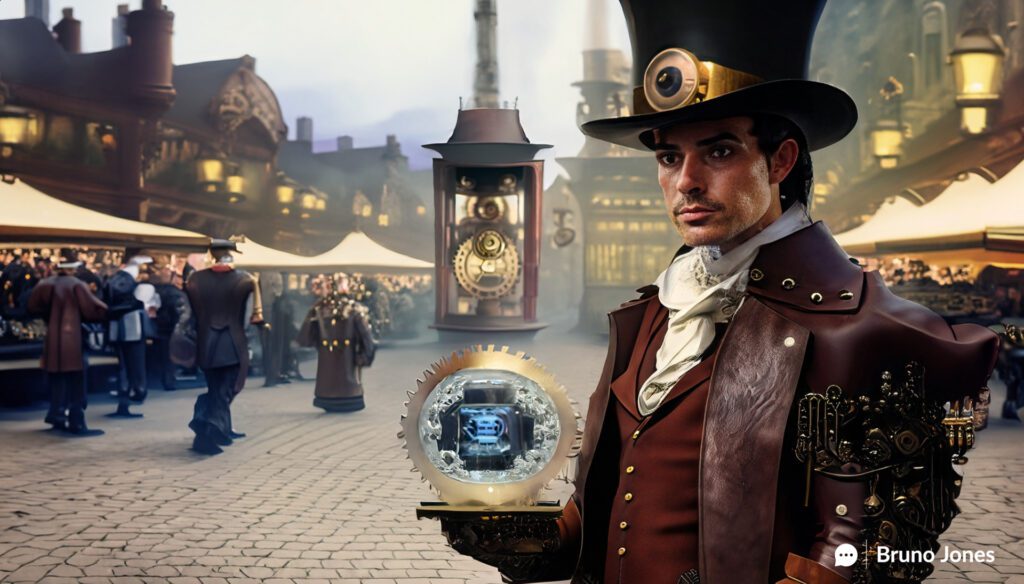If you’re in the business of turning leads into loyal customers, you know the ‘Purchase Decision’ stage is where the rubber meets the road. This is the stage where your audience, already aware of their problem and interested in your solution, is ready to make a choice. The weight of this moment cannot be overstated; it’s where you either close the deal or watch potential revenue walk away.
But here’s the rub: an alarming number of businesses fumble at this very stage. They’ve done the legwork—spreading awareness, nurturing interest—but when it comes to sealing the deal, they fall short. It’s like running 90% of a race impeccably, only to trip and fall just feet from the finish line.
Why does this happen? More importantly, how can you prevent your business from becoming another cautionary tale? The answers are not as elusive as you might think.

Table of Contents
Why the ‘Purchase Decision’ Stage is Crucial
Picture this: you’ve caught fish in a wide net, slowly pulling them closer to shore. As they near, some swim away, but those that remain are the ones you’ve got your eye on—the high-quality catches. This is essentially what happens in the ‘Decision’ stage of your sales funnel. The numbers may dwindle, but what you’re left with are leads of the highest quality, those genuinely interested in what you’re offering.
You see, your funnel serves as a filtering mechanism. From a broad pool of leads at the ‘Awareness’ stage, you’ve refined them down to those genuinely interested in your solution. By the time they reach the ‘Decision’ stage, you’re not dealing with tire-kickers; you’re negotiating with potential long-term customers.
The Business Case: Unmissable Benefits
So, why should you care? Simple. Mastering this stage doesn’t just mean you’ll close a sale; it means you’ll do so more efficiently. Every lead that arrives at the ‘Decision’ stage has been warmed up, educated, and is ripe for conversion. The resources you’ve invested in nurturing these leads will pay off exponentially when they finally make a purchase.
The benefit? Your conversion rates will not just inch but leap forward, transforming not only your sales figures but also your long-term customer relationships. This isn’t just about numbers; it’s about solidifying the foundations of your business for sustainable growth.
A Winning Strategy is Your Best Asset
How can you make the most of this pivotal stage? By understanding the psychological levers that drive decision-making. Subtle cues can make a world of difference, tipping the scales in your favor. Deploy these cues wisely and watch your conversions soar.
The ‘Decision’ stage is not just another box to tick off in your sales process. It’s the moment your marketing efforts either culminate in success or dissolve into ‘what could have been.’ Don’t let the latter happen to you.
Common Pitfalls at the ‘Purchase Decision’ Stage
Lack of Transparency: The Silent Deal-Breaker
You’ve nurtured a lead to the ‘Decision’ stage, but suddenly, they go cold. Ever wonder why? One common mistake businesses make is failing to be transparent. Leaving out essential information—costs, features, or terms—can break the trust you’ve built over the entire customer journey. People aren’t just buying a product or service; they’re investing in a relationship with your brand.
Benefit to You: Transparency is your golden ticket to building unshakeable trust. When customers trust you, they don’t just buy from you; they become advocates for your brand.
Actionable Tip: Don’t hide the ball. Be upfront about all aspects of your offering, from pricing to features and limitations. This openness not only cultivates trust but also filters out those who aren’t a good fit, saving you time in the long run.
Ignoring Customer Perspective: A One-Way Ticket to Obscurity
Too many businesses are so wrapped up in hitting their numbers that they forget who those numbers represent: real people with real needs and concerns. Focusing solely on your goals without considering the customer’s perspective is a blunder that can cost you dearly.
Benefit to You: Truly understanding your customer’s needs doesn’t just solve their immediate issues; it gives you the insight needed to anticipate future needs, creating a cycle of continuous improvement and loyalty.
Actionable Tip: Implement customer feedback loops at various stages of your funnel, not just post-purchase. This gives you a well-rounded view of your customer’s experience, allowing you to make meaningful improvements.
The bottom line? Avoid these pitfalls, and you won’t just see a bump in your conversion rates; you’ll also notice a marked improvement in customer satisfaction and long-term loyalty. And that, my friends, is not just good business; it’s the only business worth doing.
The Psychology Behind Decision-Making
The path to a customer’s ‘yes’ or ‘no’ is not a straight line; it’s a labyrinth of psychological triggers that either propel them towards a purchase or drive them away. Understanding these triggers is not just fascinating; it’s crucial for mastering the ‘Decision’ stage.
The Double-Edged Sword of Psychological Triggers
While these triggers can facilitate quicker decision-making, they can also backfire. For example, creating a sense of urgency can push a customer to purchase, but if done excessively, it can also create discomfort and distrust.
Benefit to You: Knowledge of these triggers gives you the power to guide customer decisions subtly, placing you above competitors who merely rely on the features and benefits of their products or services.
The Fine Line: Tactful Use of Social Proof and Scarcity
Two potent psychological triggers are social proof and scarcity. Done right, testimonials and limited-time offers can be incredibly effective. However, the key here is subtlety. Overuse can make you appear desperate or manipulative, diluting the potency of these powerful tools.
Actionable Tip: Use customer testimonials strategically on your product pages and during the checkout process. Limited-time offers should be just that—limited in time but also in frequency. Keep your customers’ trust by ensuring your scarcity tactics are genuine.
The intricacies of the human mind can seem complex, but they offer a treasure trove of opportunities for those willing to understand and apply them. It’s not about manipulation; it’s about facilitating a decision-making process that benefits both parties. And in that lies the essence of a successful business.
Expert Insights: Conversations with Industry Leaders
Over the years, I’ve had the privilege of candid conversations with industry leaders who have mastered the art of customer decision-making. While the specifics are confidential, the essence of these discussions can be distilled into a few key insights that can significantly improve your ‘Decision’ stage strategies.
The Wisdom of Experience
The overarching theme? A nuanced understanding of customer behavior is paramount. These experts don’t just guess; they know. They employ a range of analytical tools and data-driven strategies to dissect customer actions, making informed decisions that yield results.
Benefit to You: These are not abstract theories. These insights come from people who’ve been in the trenches, navigated the complexities, and emerged victorious. They provide a proven roadmap to decision-making success.
The Power of Data
If there’s one takeaway that resonates universally, it’s this: Don’t leave things to chance. Adopt a data-driven approach. Use analytics to track customer movements, identify pain points, and anticipate needs.
Actionable Tip: If you’re not already using customer analytics, start now. Tools like customer relationship management (CRM) software can provide invaluable data on customer behavior. Use this data to refine your strategies, offerings, and customer interactions.
Incorporating these expert insights into your strategy doesn’t just level the playing field; it tilts it in your favor. Trust the wisdom of those who’ve been there, done that, and have the success to show for it. Your ‘Decision’ stage strategy will be all the better for it.
Case Studies: Learning from the Best
When it comes to mastering the ‘Decision’ stage, some iconic figures have set benchmarks that we can all learn from. Steve Jobs is one such luminary whose tactics in this arena were nothing short of revolutionary.
The Genius of Steve Jobs: A Case in Point
Jobs didn’t just sell products; he sold experiences and visions of the future. When Apple launched the iPhone, it wasn’t merely about a device that could make calls and browse the web. It was about offering an experience that would change the way we live, work, and communicate. The decision to buy an iPhone wasn’t based solely on its features; it was about becoming part of a transformative journey.
Benefit to You: This is not just clever marketing; it’s a strategic mastery of the ‘Decision’ stage. Jobs made the decision so compelling that the product became secondary to the vision. You, too, can create such a powerful narrative around your product or service.
Actionable Tip: Frame your offerings not just as solutions to immediate problems but as gateways to new experiences or better versions of oneself. This can make the ‘Decision’ stage almost a formality.
The Tesla Trajectory: The Power of Vision
Elon Musk, with Tesla, has done something similar. The decision to buy a Tesla isn’t just about acquiring an electric car; it’s about participating in a movement towards sustainable energy. Musk focused on the bigger picture, painting a future where fossil fuels are obsolete.
Benefit to You: Musk’s approach demonstrates the power of aligning a product with a broader mission. This alignment can make the ‘Decision’ stage less about price and features and more about shared values and visions.
Actionable Tip: Identify a broader mission or vision that resonates with your target audience. Use this to frame the decision-making process.
The Amazon Prime Phenomenon: Convenience is King
Jeff Bezos took a different tack. Amazon Prime is not just about faster shipping or exclusive deals; it’s about an entirely new level of convenience. Bezos made the decision to join Prime almost a no-brainer for anyone who shops online regularly.
Benefit to You: Amazon Prime’s success shows the power of offering undeniable convenience. When the advantages are so evident, the ‘Decision’ stage becomes incredibly streamlined.
Actionable Tip: Look for ways to make your product or service irresistibly convenient. The less friction there is in the decision-making process, the higher your conversion rates will be.
The Takeaway: Adapt and Adopt
These case studies offer tried-and-true methods that have been proven to effectively navigate the ‘Decision’ stage. The key here is not to copy these strategies but to adapt them to fit your business needs. Understand your audience, identify what truly matters to them, and frame the ‘Decision’ stage in those terms.
By studying the best, you can avoid reinventing the wheel and instead focus on perfecting your own approach to the crucial ‘Decision’ stage. The benefits are manifold: increased conversions, greater customer loyalty, and a stronger brand narrative. Choose to learn from the best, and the ‘Decision’ stage will become your forte.
ROI: Why This Matters
The ‘Decision’ stage isn’t just a crucial milestone in your customer’s journey; it’s a linchpin in your business’s financial performance. Effective management at this stage has a direct and significant impact on your return on investment (ROI). Let’s break this down.
The Direct Link: Conversion Rates and ROI
Every lead that reaches the ‘Decision’ stage represents an investment—time, resources, and money spent on marketing and nurturing. When you master this stage, you dramatically increase your conversion rates, effectively maximizing the ROI on those investments.
Benefit to You: Maximizing ROI isn’t just a financial metric; it’s an indicator of business health and growth potential. Higher ROI means you can invest more in innovation, customer service, and other areas that contribute to long-term success.
The Data-Driven Approach: Measure to Manage
You can’t manage what you can’t measure. To optimize ROI at the ‘Decision’ stage, it’s essential to track key performance indicators (KPIs) related to customer decision-making.
Actionable Tip: Invest in analytics tools that provide real-time insights into customer behavior during the ‘Decision’ stage. This could range from tracking the time spent on your pricing page to analyzing the click-through rates on your final call-to-action.
By focusing on the ‘Decision’ stage with the same intensity you apply to earlier stages, you’ll not only boost conversions but also significantly improve your ROI. And in business, that’s the kind of win that doesn’t just look good on paper; it feels good in practice. Make the ‘Decision’ stage a priority, and watch your business thrive.
Trend Analysis: The Future of Decision-Making
The landscape of consumer decision-making is not static; it’s evolving, influenced by technological advances, social dynamics, and economic factors. Keeping abreast of these trends is not just smart; it’s essential for survival in today’s fast-paced marketplace.
The Data-Driven Future
The use of big data and analytics in understanding consumer behavior is on the rise. Companies are increasingly using sophisticated algorithms to predict customer decisions based on their past behavior, social interactions, and even psychological profiles.
Benefit to You: By staying ahead of this trend, you can use similar tools to optimize your ‘Decision’ stage strategies, giving you a competitive edge.
The Rise of Voice Search and Smart Assistants
As voice-activated technologies like Alexa and Google Assistant become ubiquitous, they’re starting to play a role in how consumers make decisions. The ease of saying, “Alexa, order my favorite shampoo,” is simplifying the ‘Decision’ stage for many consumers.
Benefit to You: Understanding how these platforms influence decision-making can help you adapt your strategies to meet consumers where they are, making the ‘Decision’ stage more frictionless.
Virtual Reality and the ‘Try Before You Buy’ Model
Virtual reality (VR) is changing the game by allowing customers to experience products or services before making a decision. From virtual test drives to 3D product previews, the opportunities are endless.
Benefit to You: VR can add a layer of depth to your ‘Decision’ stage, providing an experience that could tip the scales in your favor.
Actionable Tip: Stay vigilant about emerging technologies and platforms that have the potential to influence customer decisions. Whether it’s investing in data analytics tools or optimizing your products for voice search, be prepared to adapt.
In summary, the future of decision-making is shaping up to be more data-driven, more automated, and more experiential. By keeping your finger on the pulse of these trends, you’re not just staying relevant; you’re staying ahead. And in today’s market, that’s where you want to be.
Recap: Why Most Businesses Get the Purchase Decision Stage Wrong—and How You Can Get It Right!
The ‘Decision’ stage is not merely the final act in the customer journey; it’s the crescendo, the moment where all your efforts either come to fruition or fall flat. As we’ve explored, pitfalls abound at this critical juncture, but they’re far from insurmountable. From building trust through transparency to leveraging psychological triggers and staying ahead of industry trends, the opportunities to excel are numerous.
The Benefits: A Recap
– Transparency: Building trust by providing all essential information.
– Understanding Customer Needs: Focusing on the customer’s perspective to improve problem-solving.
– Psychological Mastery: Using the understanding of psychological triggers to guide customer decisions.
– Expert Insights: Leveraging wisdom from industry leaders.
– Maximized ROI: Keeping an eye on key performance indicators (KPIs).
– Staying Ahead of Trends: Adapting to emerging technologies and platforms.
Actionable Tips: Your Roadmap
– Be upfront about all aspects of your offerings, from costs to features.
– Use customer feedback loops for continuous improvement.
– Frame your products as gateways to new experiences.
– Adopt a data-driven approach to understand customer behavior better.
– Keep an eye on emerging technologies and platforms that could influence customer decisions.
In digital landscape, the only constant is change. However, one thing remains the same: the importance of the ‘Decision’ stage in the customer journey. Master it, and you don’t just win customers; you win advocates. Ignore it at your peril. The choice, as always, is yours.
Your Next Steps
The ‘Decision’ stage is more than a checkpoint; it’s a pivotal moment that directly impacts your bottom line. Whether you’re just starting out or looking to refine your approach, don’t leave this crucial stage to chance.
You’ve absorbed the insights, pondered the pitfalls, and noted the actionable tips. Now it’s time to put that knowledge into action. The most effective way to navigate the complexities of the ‘Decision’ stage? Partner with experts who’ve been there and done that.
Your Next Step: Schedule a consultation with Bruno Jones. We bring a wealth of experience and a proven track record in optimizing ‘Decision’ stage strategies. We’ll help you identify the gaps, plug the holes, and create a seamless path that guides your customers from consideration to conversion.
Don’t let potential customers slip through the cracks. Make the ‘Decision’ stage your stronghold, and watch your conversion rates soar. The time to act is now. Schedule Your Consultation.
Invest in mastery of the ‘Decision’ stage today, and reap the rewards tomorrow. We look forward to partnering with you on this transformative journey.
About Bruno Jones:
Bruno Jones, based in Denver, is a seasoned digital marketing expert with over 20 years of experience. He’s renowned for his expertise in enhancing online brand presence, particularly for companies in Colorado and Utah. His educational background in electrical engineering and a transformative approach to digital marketing from Columbia Business School have shaped his unique strategy, merging technical know-how with creative flair.
Bruno excels in harnessing consumer psychology and game theory to craft compelling digital narratives. His blog is a treasure trove of advanced SEO, social media, email marketing insights, and more, catering to both industry professionals and enthusiasts. Each of his posts showcases his knack for simplifying complex ideas into practical, outcome-oriented tactics, cementing his status as a pioneer in digital marketing innovation.



